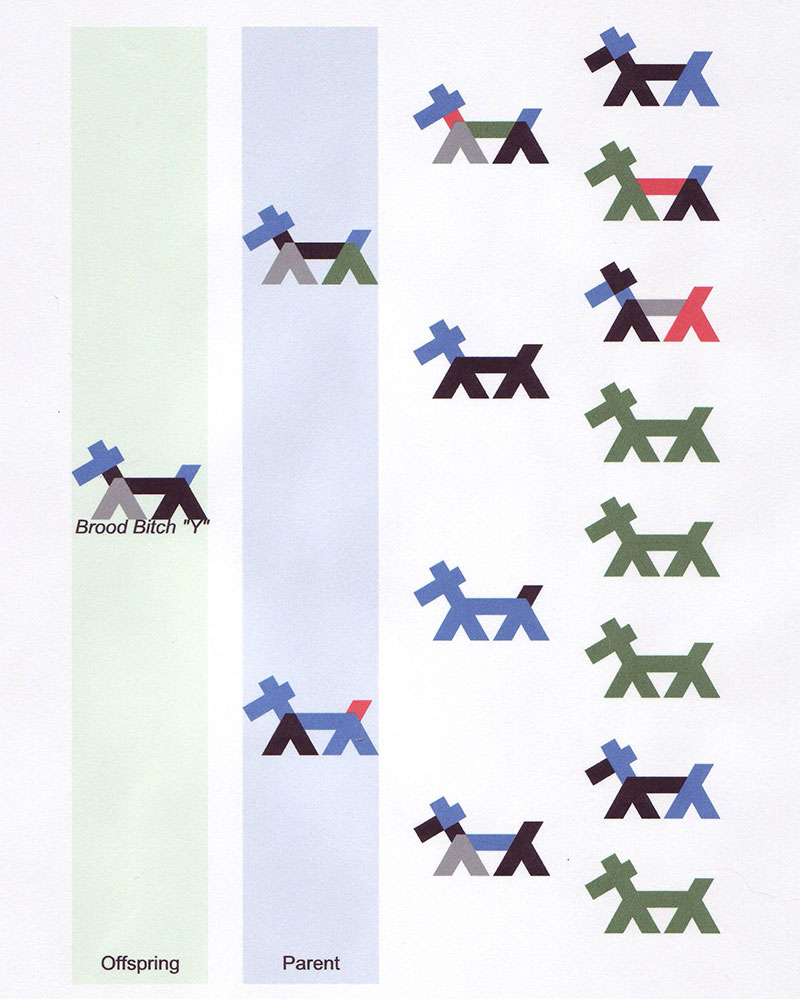The Stick Dog Pedigree is useful as a tool to improve the traits of conformation. It allows breeders to see the strengths and weaknesses of each ancestor in a pedigree. The logic underlying this pedigree is that each individual is represented as a stick figure rather than a name and title. Each ancestor is drawn as a stick figure with seven structural parts: ears, head, neck, front, back, rear and tail. Each body part is color coded for its quality based on the breed Standard. Coding is straight forward. For example, if the ears of the sire were correct based on the breed standard, they would be coded blue; if they could be improved they would be coded black. If they were faulty they would be coded red and if they were a serous fault or a disqualification they would be coded grey. Thus, the color-coding of each ancestor identifies quality or lack thereof.
| Codes | Rank For Quality |
|---|---|
| Blue | Correct based on breed standard |
| Black | Could be improved |
| Red | Is a fault |
| Grey | A serious fault or disqualification |
| Circle/green | Missing information |
Notice how the Stick Dog Pedigree shows the strengths and weaknesses of each ancestor and which ancestors have not been color coded for their qualities or lack thereof.

One of the advantages of pedigree analysis is the ability for breeders to “formula breed” and when information is misting go to a method known as “breeding-up.
About the Author
Carmen L Battaglia holds a Ph.D. and Masters Degree from Florida State University. As an AKC judge, researcher and writer, he has been a leader in promotion of breeding better dogs and has written many articles and several books.Dr. Battaglia is also a popular TV and radio talk show speaker. His seminars on breeding dogs, selecting sires and choosing puppies have been well received by the breed clubs all over the country.

